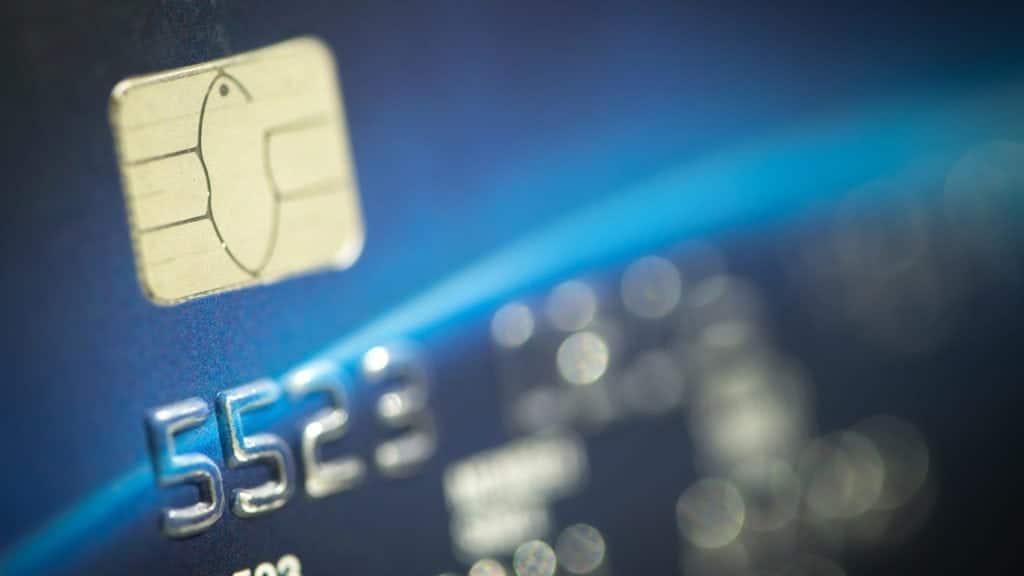ACH SEC Codes

TABLE OF CONTENTS
When it comes to the financial world, there are a lot of terminologies that someone who isn’t a part of it might have difficulties with understanding. That’s because, while financial institutions are a big part of our lives, we usually don’t look deeper than confirming whether the payment was made or received or not – and there’s nothing wrong with that.
However, we want to help you get a better understanding of certain terms – and that’s what we will do in this article with SEC codes. Below, you will find all the information you might need about ACH transactions, in which those codes are used, as well as what they are, and share with you some real life examples.
ACH Transactions – What To Know
Before diving deeper into SEC codes, let’s take a minute to better understand ACH transactions – if you’ve already worked with ACH transactions and have an idea about what is involved in them, you can skip this section and go straight to SEC codes.
The ACH network (Automated Clearing House network) allows banks to work with each other without the need to have their own network. Instead, they are under the jurisdiction of NACHA (The National Automated Clearing House Association), which establishes the rules and regulations that all the institutions that are part of the network follow.
When it comes to an ACH transaction, there are two main participants. There’s the ODFI, which stands for Originating Depository Financial Institution, and there’s the RDFI, which stands for Receiving Depository Financial Institution. To put it simply, the ODFIs are the financial institutions that send the transaction, while RDFIs are the institutions that receive it.
In terms of ACH transaction types, there are two – ACH debits, also known as direct payments (when money gets pulled out of an account), and ACH credits, also known as direct deposits (when money gets added to the account).
There is a number of situations in which ACH payments are used. The most common ones are:
- an employer sending money to their employees’ checking accounts,
- a customer sending money to a business for a service or goods,
- a business sending payment to the supplier for products or materials,
- a taxpayer sending money to Internal Revenue Service (IRS) or local organization.
ACH Payments vs. Other Payment Methods
You might be thinking – There are so many other payment methods nowadays, why should my business bother with this one? There are a few reasons, and you’ll learn all about them in a second.
First of all, ACH payments are a lot cheaper than, for example, wire transfers. One wire transfer can cost you even up to $25 to send – and that’s only within the United States. International wire transfers increase the costs even more. An ACH payment, on the other hand, costs less than a dollar to process. Of course, the final price you will have to pay for it depends on several different factors, such as how many transactions your business normally processes. Still, more often than not it ends up being a lot less than other payment methods.
Another thing is that payment methods such as credit or debit cards have expiration dates. Once a card expires, you might be unable to receive your payment. Since in ACH payments bank accounts are involved, and not cards, the chances of involuntary churn happening become lower.
Finally, ACH payments aren’t something that is limited only to specific people. Anyone who has a bank account in the United States can make an ACH payment, no matter if they’re a business or a regular consumer.
However, all those pros don’t mean that ACH payments aren’t without cons. Just like everything, they also have their downsides – in this case, the most important one being how much time it takes for the transaction to appear in your bank account. You have to remember that ACH payments are not an instant payment method. It can take three or more business days before you’ll be able to see the transaction.
The second disadvantage of ACH payments that should be mentioned is the fact that while bank accounts don’t expire, ACH credits and debits can still be rejected for a number of reasons, including not having enough funds in the bank account.
Now that ACH payments have been explained, we can move to the next section, SEC codes.
SEC Code – What Is It
An SEC (Standard Entry Class) code is a code made up of three letters that explains how a specific ACH transaction was authorized by the business or a customer that received it.
The codes are universal, and they are maintained and defined by NACHA, which has jurisdiction over the ACH network.
SEC Codes – The List
Different authorization types are signified by different Standard Entry Class (SEC) codes. Below, you will find a list of the most common ones, so next time you see it, you’ll have a better understanding of what they mean.
All codes can be divided into four categories – consumer codes, consumer or corporate codes, corporate codes, and debit card/POS entries.
| Consumer Codes | Corporate Codes | Consumer or Corporate Codes | Debit Card/POS Entries |
| CIE – Customer-Initiated Entry | ARC – Accounts Receivable Entry | ACK – ACH Payment Acknowledgment | MTE – Machine Transfer Entries |
| DNE – Death Notification Entry * | BOC – Back Office Conversion Entry | ATX – Financial EDI Acknowledgment | POS – Point-of-Sale Entry |
| ENR – Automated Enrollment Entry | COR – Notification of Change, or Refused Notification of Change | CCD/CCD+ – Corporate Credit or Debit Entry | SHR – Shared Network Transaction |
| PPD/PPD+ – Prearranged Payment and Deposit Entry | IAT – International ACH Transaction Entry | CTX – Corporate Trade Exchange Entry | |
| RCK – Re-presented Check Entry | POP – Point-of-Purchase Entry | ||
| TEL – Telephone Initiated Entry | TRC – Truncated Entry | ||
| WEB – Internet-Initiated/Mobile Entry | TRX – Truncated Entry Exchange | ||
| XCK – Destroyed Check Entry |
* (this Standard Entry Class code can only be used by Federal Government Agency)
Keep in mind that some of the codes can be used for more than one thing. For example, a number of SEC codes can be used for both ACH credits and debits, while with others, it isn’t possible. The same goes for single and recurring transactions – some SEC codes can be used for both, while orders only with one.
Some codes also have a restriction on which entity can use them, as was the case for the Death Notification Entry. A number of SEC codes should only be used for customer or retail transactions, while others are reserved for ACH transactions done by the government or businesses.
SEC Codes – The Most Common Ones
There are some SEC codes that are more used than others. For that reason, here is a short explanation for a few of the most common ones, so that you know more or less in which situations they are used:
- ACK/ATX – these are acknowledgement entries – the RDFIs acknowledge that the payment was made via the CCD or CTX format (ACK for CCD and ATX for CTX). Thanks to those codes, the originator knows that the payment was received and that the RDFI will try to forward the payment to the Receivables account.
- MTE – clearing of transactions via automated teller machines.
- POP – this ACH debit application is used by ODFI as a payment method for an in-person purchase. This type of single entry debit entries is initiated based on written authorization, as well as account information such as the consumer’s routing number or account number, which is taken from a source document, or simply a check. All this is happening at the point of purchase and the check is returned to the customer.
- RCK – this is a single entry debit transaction that is used by institutions to present a check that has already gone through the check collection system but has been returned for whatever reason (in most cases insufficient or uncollected funds).
- TEL – this standard entry class (SEC) code is used in single entry debit transactions in which the authorization is received orally, via a phone call. There are two situations in which it can be used – when there is already a relationship between the two parties, or there is no relationship but the receiver was the one to initiate the contact. It can be used for some types of consumer debit entries.
- WEB – this is a SEC code that is used for the internet payment environment. The originator receives the authorization via the Internet.
SEC Codes – How Do They Work
All ACH payments, whether we’re talking about ACH debit or ACH credit, need to include an SEC code. The responsibility for using the right one falls on ODFIs – and considering the fact that adding the wrong code can result in a violation of NACHA Operating Rules, having a good understanding of what different Standard Entry Class codes mean and when they should be used is vital.
Using the wrong SEC code can also result in an ACH return. In this case, the ODFIs will have to pay any fees associated with it, and they will also be responsible for redoing the submission process, this time with the correct code.
Another thing that the ODFIs are responsible for, is having the right authorization in place – which one that is depends on the specific SEC code. For instance, most ACH debits would require written authorization, while in other cases, an oral authorization obtained during a phone call is needed (in this case, the ODFIs have to keep the recording of the telephone call for a period of two years from when the transaction took place, or they have to send a written confirmation of the oral authorization).
SEC Codes – Real Life Example
Most people better understand certain concepts if they’re given an example from their life, so let us provide you with that.
Let’s say that you just signed new life insurance. As you know, those require you to pay monthly insurance premiums, but you don’t want to deal with manually sending them every month. For this reason, you provide your bank with all the information they will need to make the payments automatically, such as the name of the bank, the bank account, the amount of money that needs to be withdrawn from your account and sent to the insurance company’s bank account and so on.
Every month, once the deadline for the payment comes, your insurer’s bank will create an ACH entry, requesting an agreed-upon amount of money to be taken from your account. The request is then sent to an ACH operator.
In the US, there are two ACH operators – the Reserve Banks and EPN (Electronic Payments Network). They are a third party that manages the requests and settlement of ACH transactions between different institutions that are part of the ACH network.
Once the operator receives the request from the ODFIs, they will send a request to your bank so that the money can be taken from your account. Your account is debited, and once the debit becomes cleared by the operator, the money will be sent to your insurer’s bank.
Insurance premiums are just one example of when SEC codes are used – there are plenty of other ones, including mortgage payments or installment loan payments.
Summary
SEC codes are helpful in determining how a certain ACH transaction was authorized, and are more common in your life than you might think, even if you don’t notice them. While there is a number of different codes, they can all be divided into four categories – consumer codes, consumer or corporate codes, corporate codes, and debit card/POS entries.
As we already mentioned, there are many instances in your life where SEC codes are used – the most common ones being subscriptions, insurance premiums, or mortgage payments. However, don’t worry if you’re having a hard time understanding them – it is not your responsibility to insert them. Instead, ODFIs need to take care of that.
With that being said, we have concluded our article on what SEC codes are, as well as given you the most important information one needs to know about them. If you’re interested in gaining more knowledge in the financial field, you can always check out the rest of the articles on our blog.





